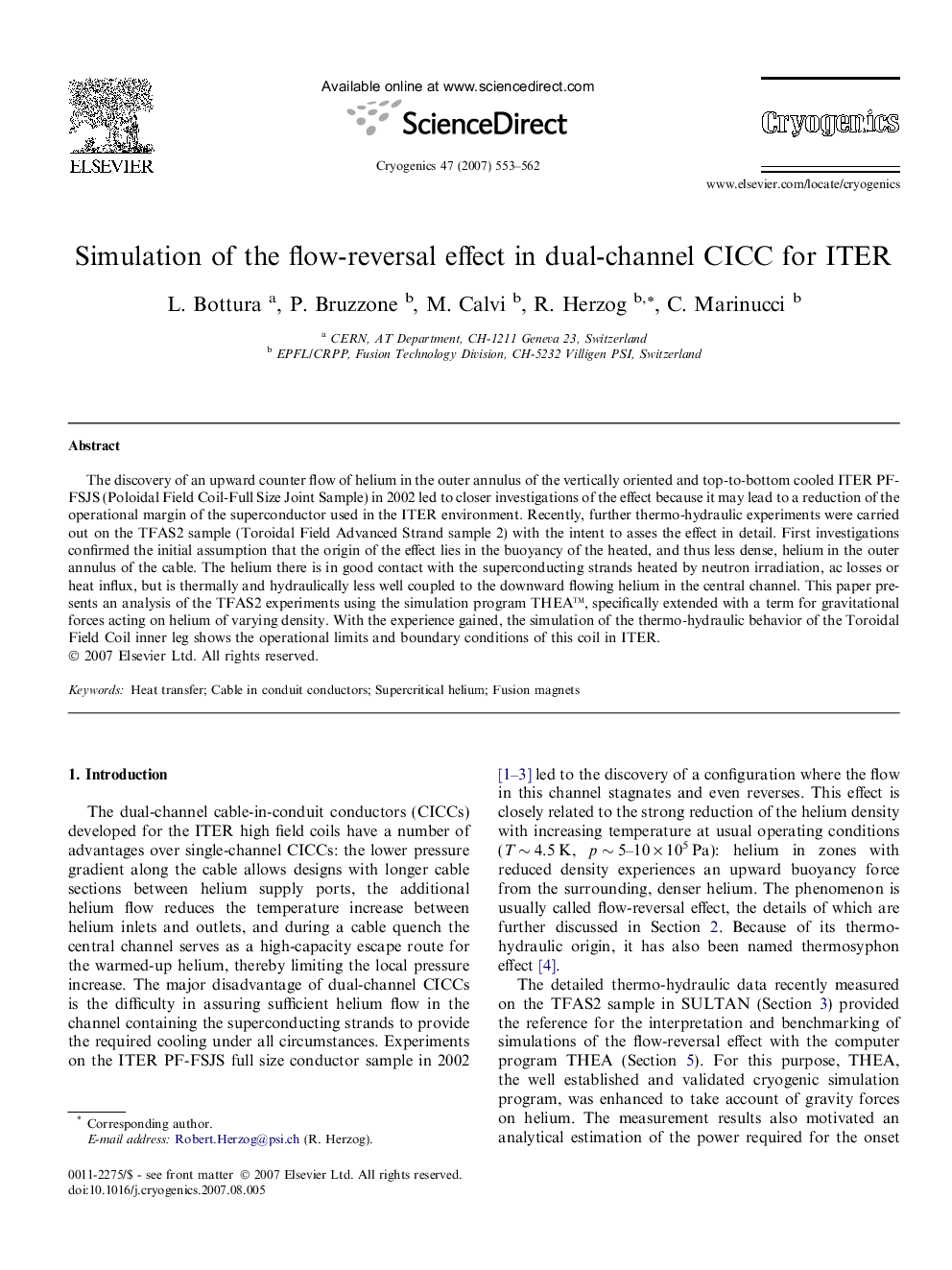| کد مقاله | کد نشریه | سال انتشار | مقاله انگلیسی | نسخه تمام متن |
|---|---|---|---|---|
| 1508351 | 1511072 | 2007 | 10 صفحه PDF | دانلود رایگان |
عنوان انگلیسی مقاله ISI
Simulation of the flow-reversal effect in dual-channel CICC for ITER
دانلود مقاله + سفارش ترجمه
دانلود مقاله ISI انگلیسی
رایگان برای ایرانیان
کلمات کلیدی
موضوعات مرتبط
مهندسی و علوم پایه
مهندسی مواد
مواد الکترونیکی، نوری و مغناطیسی
پیش نمایش صفحه اول مقاله

چکیده انگلیسی
The discovery of an upward counter flow of helium in the outer annulus of the vertically oriented and top-to-bottom cooled ITER PF-FSJS (Poloidal Field Coil-Full Size Joint Sample) in 2002 led to closer investigations of the effect because it may lead to a reduction of the operational margin of the superconductor used in the ITER environment. Recently, further thermo-hydraulic experiments were carried out on the TFAS2 sample (Toroidal Field Advanced Strand sample 2) with the intent to asses the effect in detail. First investigations confirmed the initial assumption that the origin of the effect lies in the buoyancy of the heated, and thus less dense, helium in the outer annulus of the cable. The helium there is in good contact with the superconducting strands heated by neutron irradiation, ac losses or heat influx, but is thermally and hydraulically less well coupled to the downward flowing helium in the central channel. This paper presents an analysis of the TFAS2 experiments using the simulation program THEAâ¢, specifically extended with a term for gravitational forces acting on helium of varying density. With the experience gained, the simulation of the thermo-hydraulic behavior of the Toroidal Field Coil inner leg shows the operational limits and boundary conditions of this coil in ITER.
ناشر
Database: Elsevier - ScienceDirect (ساینس دایرکت)
Journal: Cryogenics - Volume 47, Issues 11â12, NovemberâDecember 2007, Pages 553-562
Journal: Cryogenics - Volume 47, Issues 11â12, NovemberâDecember 2007, Pages 553-562
نویسندگان
L. Bottura, P. Bruzzone, M. Calvi, R. Herzog, C. Marinucci,